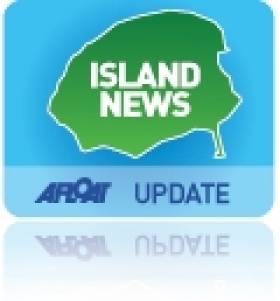Displaying items by tag: SPA's
Helicopters Role in Proposed Upgrade of Dalkey Island Harbour
#DALKEY ISLAND FERRY – Up to 500 helicopter flights over an 8-day timeframe could be operating across the 300m wide Dalkey Sound, following proposed plans to upgrade the island's slipway harbour were unveiled last week, reports Jehan Ashmore.
According to consultants that carried out a report for Dun Laoghaire-Rathdown County Council, the proposed upgrade of the slipway, under a PART 8 Scheme, could see a site near Sorrento Point on Coliemore Road, as the desired landing location to load helicopters heading for the island with machine plant, equipment and materials.
Under the proposed development of up to 12 weeks to complete, work would involve raising the existing slipway to create a stepped top surface, widening of the existing channel, a new raised pier section with transitional steps, a handrail, mooring rings and an access ladder.
The consultants Malachy Walsh & Partners and Shaffrey Associate Architects have however indicated that Dun Laoghaire may be an alternative helicopter embarkation point. Total construction costs of the project are estimated at approximately €228,000, however should Dun Laoghaire be opted instead, this would double lift costs compared to Dalkey, adding about 84% to the overall helicopter costs.
The use of helicopter transportation is not new to the island, as in the early 1990's works on the island harbour also saw flights running back and forth to the grounds of the Dalkey Island Hotel, now occupied by a luxury apartment complex.
The consultant's report also adds that Dalkey Island is designated as a Special Protection Area (SPA) for roosting the common, artic & roseate tern species in accordance with the requirements of the EU Habitats Directive 1992, however given the scale and the location of the slipway works, the report concludes that a full appropriate assessment screening would not be required for the Dalkey SPA because it is considered not to have a significant effect on this site.
As previously reported on Afloat.ie the island has also been proposed as a Special Area of Conservation (SAC) as part of six Natura 2000 sites within Irish waters.
Plans and particulars of the proposed slipway upgrade of the Dalkey Island PART 8 Scheme development including timescale of public consultation process, can be found in greater detail to include downloadable PDF documents, by following this LINK.





























































